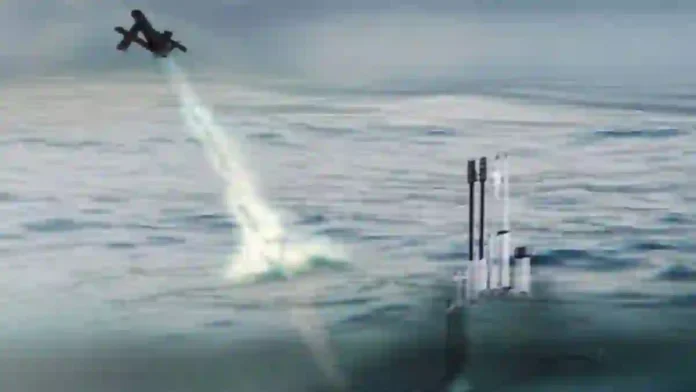India’s Defence Research and Development Organisation (DRDO), in a landmark collaboration with Sagar Defence Engineering, is spearheading a transformative leap in undersea warfare through the development of submarine-launched Unmanned Launchable Underwater Aerial Vehicles (ULUAVs) and AI-driven underwater drone swarms. This ambitious initiative signals a new era for the Indian Navy, promising to redefine the contours of stealth, intelligence, and combat capabilities beneath the waves.
ULUAVs represent a remarkable fusion of underwater and aerial drone technology. These hybrid drones are engineered to be launched directly from a submarine’s torpedo tube, even while the vessel is in motion and submerged. Once deployed, the ULUAV travels underwater before autonomously surfacing and seamlessly transitioning into flight mode.
Read- Ready To Ease Entry Barriers For Private Firms Keen On AMCA: Defence Sec Rajesh Kumar Singh
This unique operational profile allows submarines to extend their intelligence, surveillance, and reconnaissance (ISR) reach far beyond traditional limits, all while maintaining their most critical asset—stealth.
Unlike conventional systems, Indian ULUAVs are being designed for over one hour of endurance and a range exceeding 20 kilometres, significantly outperforming current U.S. equivalents, which typically offer only 30 minutes of flight time and a 7-kilometre range.
The operational flexibility of ULUAVs is further enhanced by their ability to conduct a variety of missions. Once airborne, these drones can perform ISR tasks, serve as radio relays to extend communication networks, and potentially execute electronic warfare or decoy operations.
The system’s design places a premium on reliable post-mission recovery, ensuring that these valuable assets can be reused for multiple sorties, thus maximising operational efficiency and cost-effectiveness.
Parallel to the ULUAV program, DRDO is also advancing the development of autonomous underwater drone swarms. These are groups of small, unmanned underwater vehicles (UUVs) that can be deployed and coordinated from a submarine platform.
The integration of AI-driven swarm intelligence enables these UUVs to operate collaboratively, executing complex missions such as area surveillance, mine countermeasures, and coordinated attacks on adversarial assets.
Read- Why Did China Target India’s Rafale Jets?
The deployment of such swarms from a submerged submarine allows for persistent monitoring of surface and subsurface threats, relaying real-time targeting and ISR data back to command centres without ever compromising the submarine’s concealed position.
The combined effect of ULUAVs and underwater drone swarms is to dramatically expand the operational envelope of Indian submarines. These platforms can now perform over-the-horizon reconnaissance, relay critical communications, and potentially engage targets, all while remaining undetected beneath the surface.
The integration of artificial intelligence further multiplies their effectiveness, enabling a single submarine to undertake multiple, simultaneous missions—ranging from ISR and electronic warfare to, in the future, kinetic strikes—without the need for surfacing or exposing itself to enemy detection.
DRDO’s pioneering work in submarine-launched ULUAVs and AI-driven underwater drone swarms is set to revolutionise India’s naval warfare capabilities.
By leveraging indigenous innovation and advanced unmanned systems, India is not only enhancing its maritime security and strategic deterrence but also positioning itself at the forefront of next-generation undersea warfare technology.
This initiative underscores India’s commitment to self-reliance in defence technology and marks a significant stride towards achieving technological superiority in the increasingly contested underwater battlespace.
Based On Bridge Chronicle Report
Agencies




